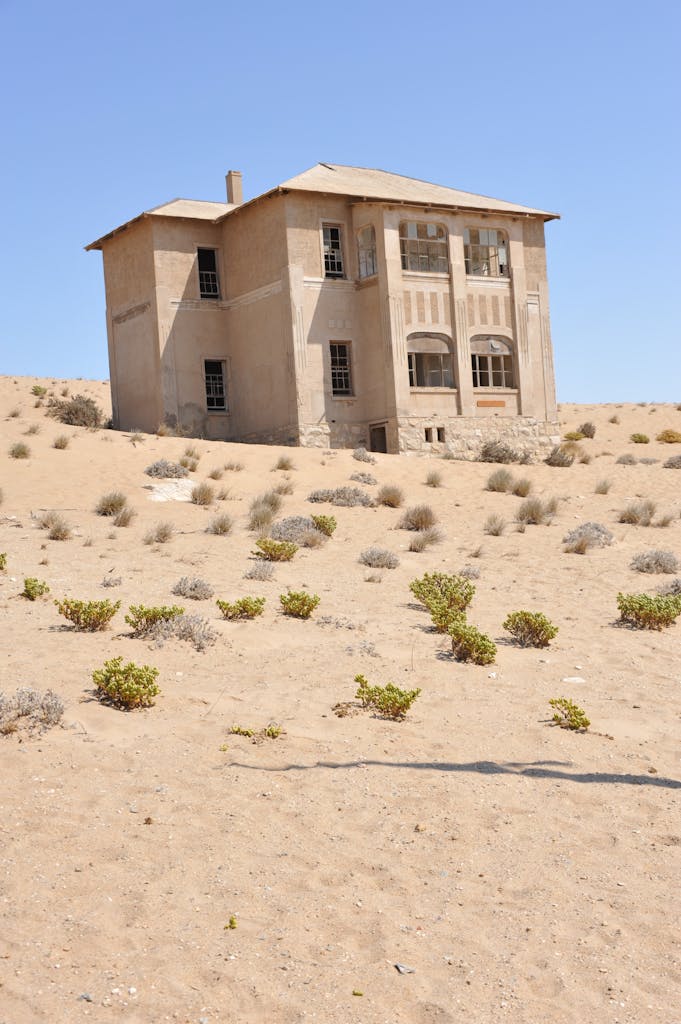Understanding the Climate Challenge
Architecture in arid and windy climates presents a unique set of environmental challenges that push designers to balance form, function, and survival. These regions—characterized by low humidity, intense sun exposure, large diurnal temperature swings, and persistent wind or dust storms—require strategies that go far beyond conventional building techniques. Designing for this environment means embracing materials, forms, and systems that not only withstand the elements but harmonize with them.
Whether it’s the windswept deserts of the Middle East, the dry plains of Central Asia, or the dusty savannas of North Africa, architecture in arid and windy climates must reimagine shelter as a mediator between nature’s extremes and human comfort.
Historical Precedents: Lessons from Vernacular Design
Long before modern engineering, traditional communities across arid landscapes developed passive and elegant strategies to survive in these environments:
- Windcatchers (Malqaf or Badgir): Tall, open-topped structures that capture wind and funnel it into buildings for natural cooling. Common in Iran, Egypt, and the Gulf.
- Thick Mud or Stone Walls: Used in places like Morocco and Yemen to buffer interior temperatures from extreme daytime heat and nighttime cold.
- Compact Urban Layouts: Found in old cities like Sana’a or Yazd, narrow alleys and shaded courtyards reduce solar exposure and control dust movement.
These strategies, born of necessity, provide a wealth of inspiration for modern architecture in arid and windy climates.
Dust as a Design Force
Unlike rain or snow, dust is rarely given architectural attention—yet it can be one of the most aggressive environmental forces in arid regions. Dust erodes façades, clogs ventilation systems, reduces visibility, and affects both building performance and long-term maintenance. Thus, architecture in arid and windy climates must treat dust not as an inconvenience, but as a fundamental part of the design equation.
Some key strategies include:
- Angled Surfaces: Minimizing horizontal elements where dust can accumulate.
- Sealed Joints and Louvers: Preventing air infiltration during sandstorms.
- Airlocks and Transitional Zones: Entry vestibules can reduce dust infiltration into interior spaces.
- Self-Cleaning Materials: Innovations like hydrophobic or electrostatic surfaces help buildings resist dirt buildup.
Harnessing the Wind Instead of Fighting It
Wind in arid regions is often hot, dry, and abrasive—but it can also be harnessed for comfort and energy. Rather than treating wind as a purely destructive force, designers can redirect or filter it to cool interiors, ventilate spaces, or power small turbines.
Techniques include:
- Wind-Responsive Forms: Dunes, sails, and other aerodynamic geometries reduce drag and deflect air.
- Perforated Screens: Inspired by mashrabiya, they allow air circulation while blocking dust.
- Internal Courtyards: Shaded voids in the center of buildings draw in cooled air through stack-effect ventilation.
Wind in architecture isn’t just a factor to resist—it’s a resource to use.

A Central Challenge: Designing with Dust
At the heart of designing architecture in arid and windy climates is the need to treat dust as a key material force. Designers often overlook how microscopic particles move, settle, and interact with surfaces. But in many desert projects, success is not about eliminating dust—it’s about accommodating it.
In high-end desert villas, architects now test façade geometry for dust accumulation through wind tunnel simulations. In infrastructure like desert airports or border stations, building orientation is carefully aligned with prevailing wind patterns. And in community centers or mosques, designers balance thermal comfort with air purity, ensuring dust filters are integrated into every passive system.
The deeper reality is this: dust tells time in desert architecture. It reveals which surfaces are functional and which are neglected. It becomes part of the aesthetic—the natural patina of the place. And when architecture embraces that aesthetic, the design becomes honest, resilient, and truly site-specific.
Material Choices: Durable, Breathable, and Repairable
Architecture in arid and windy climates must prioritize materials that age well, resist erosion, and support thermal balance. Ideal materials include:
- Stone and Rammed Earth: Thick, insulating, and low-maintenance.
- Terracotta Tiles: Breathable and thermally stable.
- Weathering Steel (Corten): Develops a protective patina that resists dust damage.
- Porous Fabrics and Screens: For shading structures that reduce wind velocity without blocking airflow.
Materiality in these environments isn’t about perfection—it’s about integrity. Materials should speak the language of their climate.
Indoor Comfort: Passive Before Active
Before turning to air conditioning or mechanical systems, architects working in arid regions must first maximize passive strategies. A well-shaded, naturally ventilated building will reduce energy use, extend equipment life, and create a healthier indoor environment.
Passive design priorities include:
- Orientation: Narrow plans with limited western exposure.
- Roof Overhangs and Deep Recesses: To minimize solar gain.
- Thermal Mass: Using materials that absorb heat during the day and release it at night.
- Cross Ventilation: Strategically placed openings to draw in and exhaust air.
In desert climates, passive comfort is more than a sustainability strategy—it’s a survival mechanism.
Landscape as Dust Control
The surrounding landscape can be a building’s first line of defense. In architectural planning for arid and windy climates, site design must include:
- Gravel or Stone Fields: Prevent soil erosion near entrances.
- Windbreaks: Rows of trees or screens to reduce airspeed.
- Vegetative Buffers: Xeriscaping with native plants to stabilize topsoil.
- Water Features: When feasible, moisture helps capture dust and reduce ambient temperature.
Integrating architecture with its terrain transforms the environment from adversary to ally.
Conclusion: Resilient Design Rooted in Context
Ultimately, successful architecture in arid and windy climates isn’t about avoiding the elements—it’s about working with them. By drawing from vernacular wisdom, applying new technologies, and understanding the deep interplay between dust, wind, and heat, architects can create buildings that are not just resilient, but also beautiful, timeless, and deeply connected to their environment.
